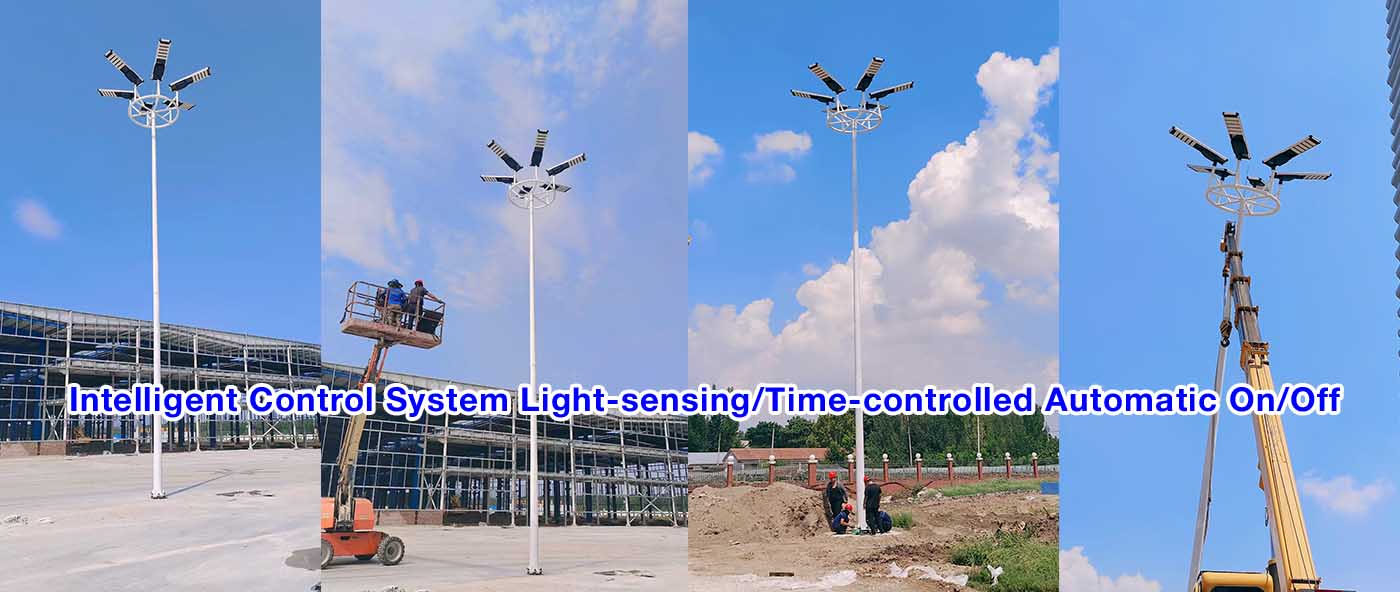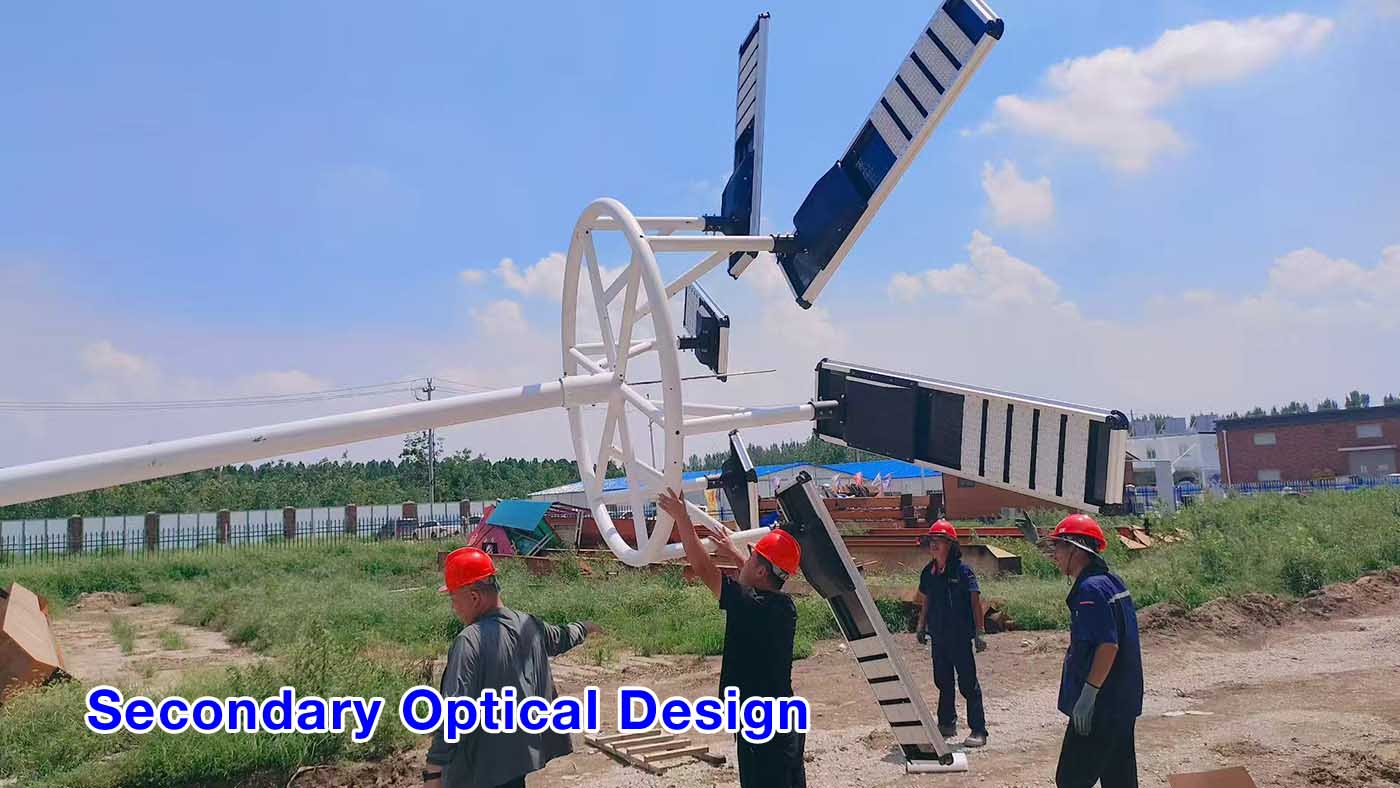Classification By height: high pole lights, mid-pole lights, street lights, garden lights, lawn lights, underground lights, etc.
By pole material: hot-dip galvanized iron street lights, hot-dip galvanized steel street lights, and stainless steel street lights.
By light source: sodium lamps, LED street lights, energy-saving street lights, and new Somin xenon street lights.

By design: Chinese lanterns, antique lamps, landscape lights, single-arm street lights, double-arm street lights, etc.
By power supply method: mains circuit street lights, solar street lights, and wind-solar hybrid street lights.
LED street lights: They have the advantages of high efficiency and energy saving, long life, rich colors, and easy maintenance.

Solar high-mast lights utilize solar energy as a lighting source. They offer advantages such as energy conservation, environmental protection, and intelligent control, making them widely used in places like roads and squares. The following is a detailed introduction: Structure and Principle
Core Components: They primarily consist of solar panels, energy storage batteries, an intelligent control system, and LED light sources.
Operating Principle: The solar panels convert sunlight into electricity, which is stored in the energy storage batteries.
The intelligent control system automatically adjusts the light brightness based on factors such as ambient light intensity and time of day, supplying the electricity to the LED light source for illumination at night.

Their energy consumption is much lower than traditional street lights, their service life is longer, and they can achieve precise control of lighting brightness and time through intelligent control systems.
They are widely used in urban roads, residential areas and other places.
Intelligent Control System Light-sensing/Time-controlled Automatic On/Off: Lights automatically turn on when the illuminance is -10 lux at dusk and off when it's -20 lux at dawn) or at preset times (e.g., full brightness from 7:00 PM to 11:00 PM, reduced to 50% brightness after 11:00 PM), preventing manual errors.
Secondary Optical Design: Use lenses or reflectors to focus light on the area that needs illumination (such as the road surface), minimizing "light waste" (for example, by preventing direct light from hitting the sky or residents' windows, reducing light pollution).
Light spot uniformity must be -0.7 (poor uniformity can easily cause alternating light and dark on the road surface, affecting visibility).
leave a message
Scan to Wechat :

Scan to WhatsApp :
